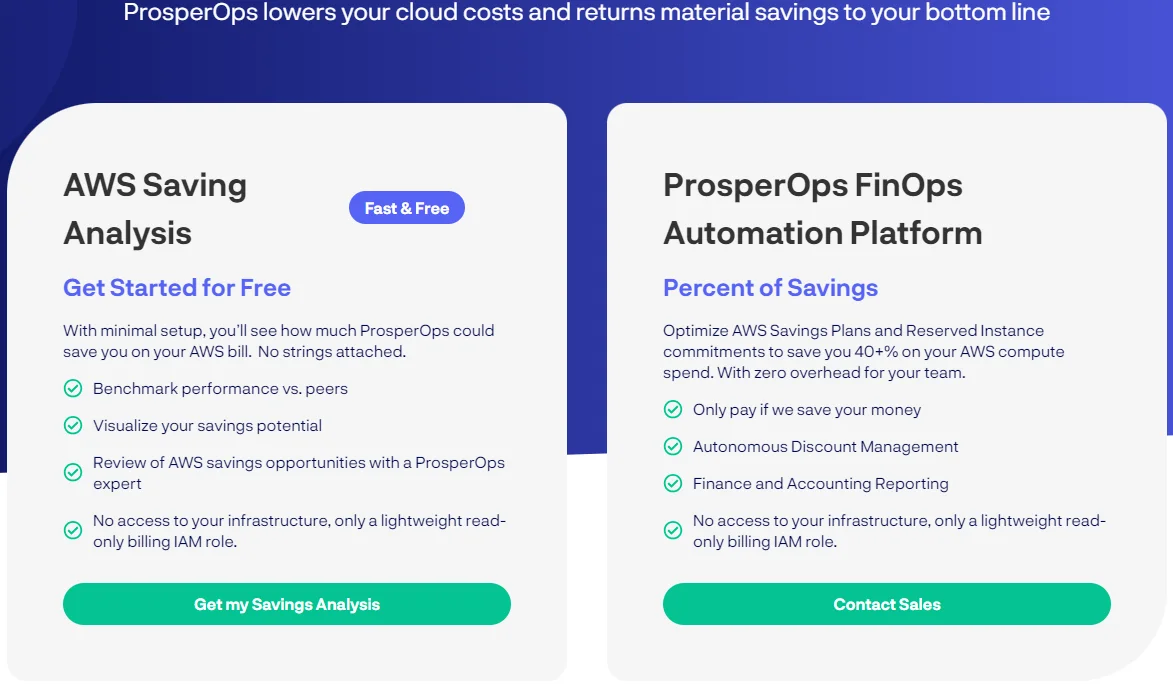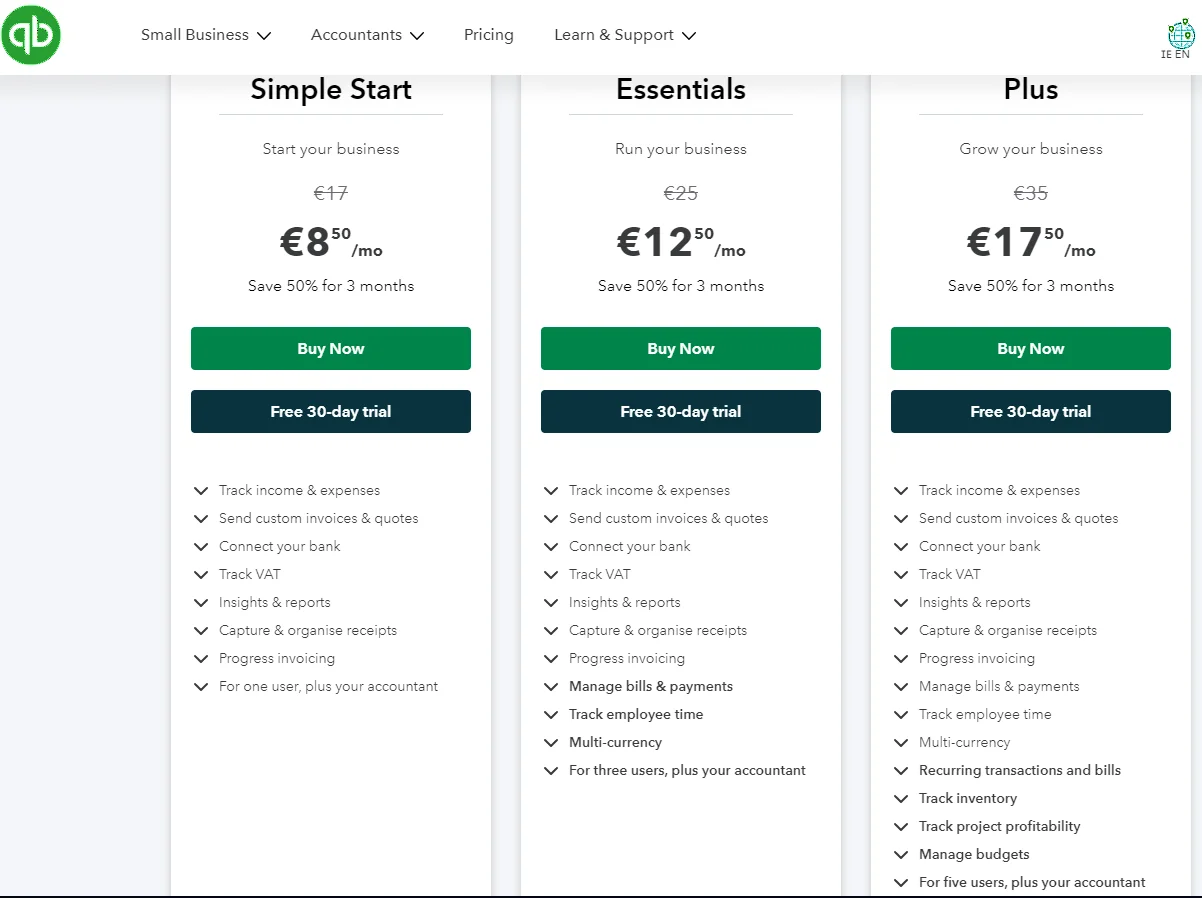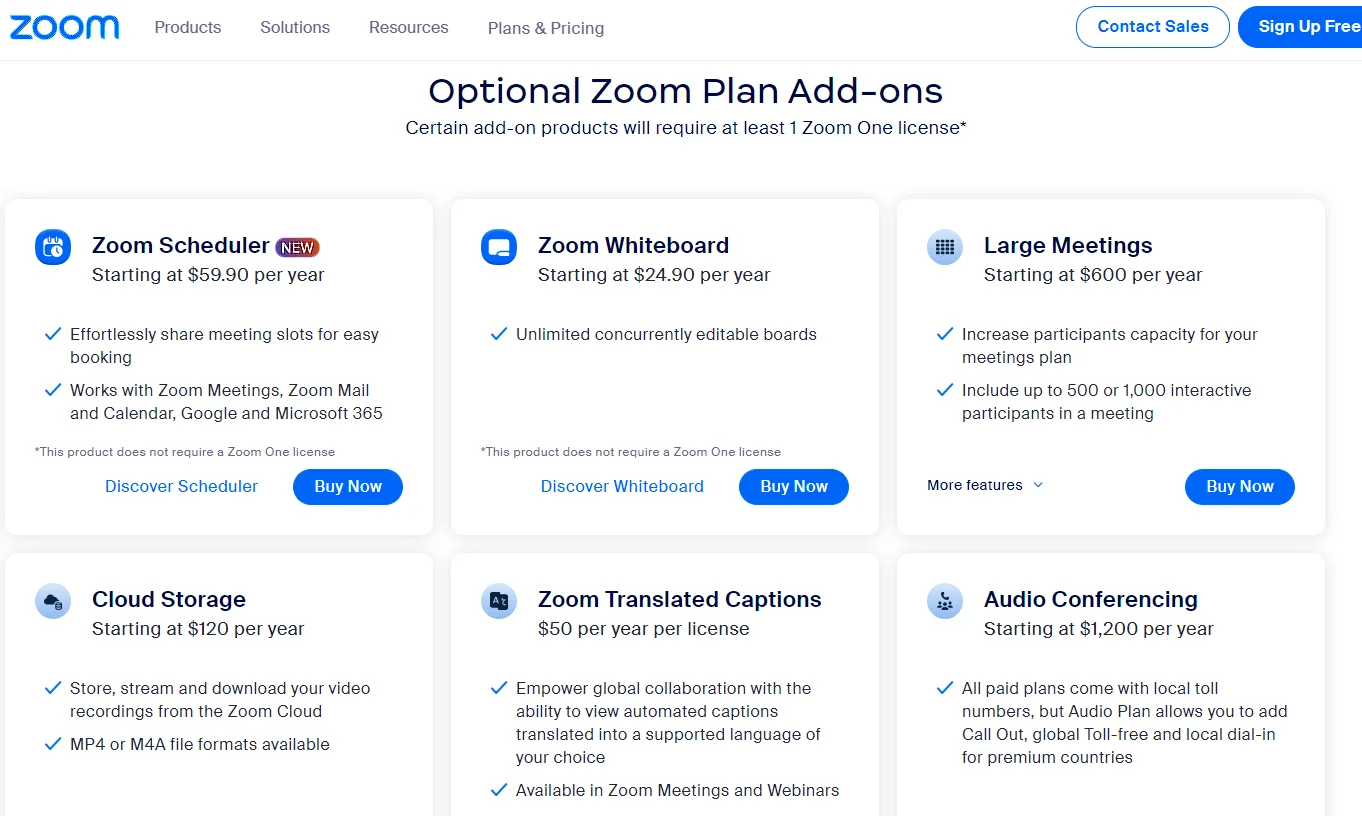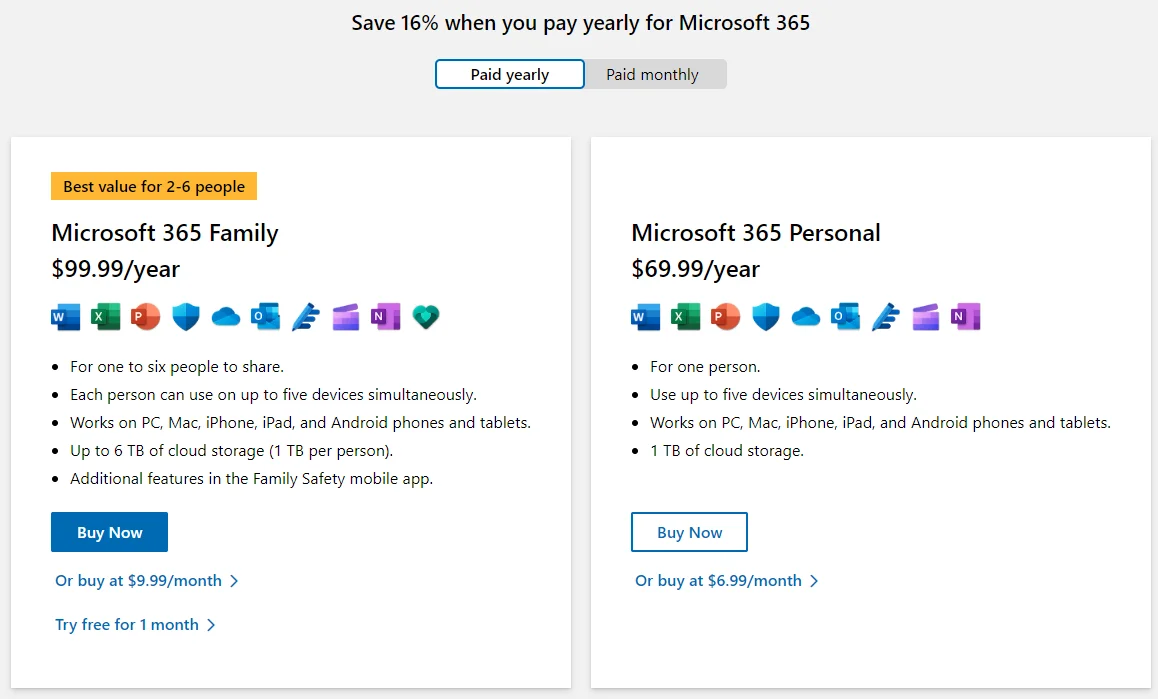The best pricing strategy for your SaaS business will depend on your specific business model, target market, and competition. You’ll also want to test different pricing strategies to see which one works best for you.
That said, feature-based pricing can be a very profitable way to price SaaS products. Here’s how it works. We’ll also include how to determine your cloud costs per feature so you can set profitable prices.
Table Of Contents
Overview Of SaaS Pricing Strategies
Here’s the thing. A SaaS pricing strategy differs from a pricing model. A pricing strategy is how you set prices for your products and services, whereas a pricing model refers to how you package and present them to your customers.
In that regard, SaaS pricing strategies include:
- Cost-plus pricing strategy – You calculate your input costs, such as materials, labor, and overheads, then add a markup. SaaS companies calculate these costs as the Cost of Goods Sold (COGS).
- Competitor-based pricing – This approach considers what the competition charges and sets prices at par, higher, or lower than them, regardless of costs, market demand, etc.
- Value-based pricing – Emphasizes the perceived value of your product or service rather than the costs associated with building and maintaining it.
- Penetration pricing – A strategy in which you enter a market at a lower price than you’d otherwise charge, to attract more customers and grow your market share.
- Skimming pricing – Here, customers get access to exclusive, groundbreaking capabilities at a premium, then prices drop as demand increases or competitors enter the market.
- Free trial pricing – Allows your customers to use some or all your product capabilities for a limited time for free, so they can decide whether to upgrade to a paid plan if it fits their needs.
- Prestige pricing – This pricing strategy involves setting prices higher than competitors to convey superior quality, luxury, or exclusivity. This approach targets a (relatively) small customer base that consists of high-value customers. Apple products come to mind here.
You can choose from a variety of pricing strategies for SaaS offerings:
- User-based pricing – Each user pays a flat fee to access the software. It’s easy to understand and implement, but it can be difficult to scale if your user base grows rapidly.
- Per-seat pricing – It is similar to per-user pricing, but instead of charging per user, you charge per seat. This can be a good option if you have a large number of users who only use the software occasionally.
- Usage-based pricing – It is based on the incremental value the user gets from the product or service. The price increases as usage increases.
- Flat-rate pricing – Charges the same rate for all customers regardless of users, features, capacity, etc. It is ideal for a SaaS company with a single buyer persona or customers with similar requirements.
- Freemium pricing – Offers a free version of the software with limited features, and then charges users for additional capabilities or a premium version of the software. The freemium strategy is ideal for businesses that want to attract a large user base before charging for premium features.
- Tiered pricing – Offers several pricing tiers based on incremental value, such as the number of users, capacity, or features. A tiered pricing strategy is a good option for organizations that need a variety of features or that have different usage needs.
- Per-transaction pricing – Charges users based on the number of transactions they make using the service or product. It’s suitable for SaaS providers with customers who have high transaction volumes.
- Metered pricing – Charges users based on their actual use of the service. This is a good option for businesses with variable usage requirements.
- Bundled pricing – Offers a discount for purchasing multiple products or services together. It’s a good offering for businesses that want to save money by purchasing multiple products from the same vendor.
- Feature-based pricing – This is the SaaS pricing model we’ll cover in this post.
Here’s what we mean.
What Is Feature-Based Pricing?
Feature-based pricing is a pricing model in which a SaaS company charges its customers based on the features they use. A feature-based pricing system works alongside a tiered model because you pay more to unlock more features, usually in the next higher tier.
For example, a SaaS company might offer a basic tier with basic features at $5 per month. It may also offer a middle tier that includes some of the basic features plus one or more additional features for $7.50 per month.
The same company may then offer an advanced tier with more features for $10 per month.
Consider this. A customer might pay $5 per month for a basic CRM that includes contact management, and $7 per month to have an automated database cleaning service. And if they need marketing automation features, they might pay $10 per month for the advanced tier.
This contrasts with other pricing models, such as flat or user-based pricing, which charge customers based on the number of users or seats they have.
There are a few things to keep in mind when using feature-based pricing:
- You need to consider which features to include in each pricing tier carefully.
- You need to make sure that your pricing is transparent and easy to understand.
- You need to be prepared to offer discounts for customers who purchase multiple features or who commit to a long-term contract.
But is feature-based pricing worth it today? Consider the following benefits.
What Are The Pros Of Feature-Based Pricing?
Some of the main advantages of feature-based pricing include:
- It can be a good option for SaaS companies offering a wide range of features. That’s because it charges customers for the specific features they use.
- It can be cost-effective for your customers, as they only pay for the features they need.
- Customers know to expect a higher price as they unlock a higher number of features or advanced functionality. So, feature-based pricing can be quite straightforward to understand.
- As your customers’ needs grow, they are more likely to purchase advanced features, serving their growing requirements while increasing your revenue.
- Works well with other pricing models and strategies, such as free trial and tiered pricing, providing more flexibility for both your company and customers.
- You can add a custom tier where customers can pick and choose a combination of features that works for them for a custom price.
- Feature-based pricing clearly outlines what capabilities customers can expect from the pricing tier they select.
- The pricing model segments customers based on the features they use. By doing so, you can find out which features are the most popular and which ones you can improve, merge, repurpose, or decommission altogether.
Overall, feature-based pricing can be a good option for SaaS companies that want to offer their customers a flexible and cost-effective pricing option. Yet, the SaaS pricing model is not flawless.
What Are The Cons Of Feature-Based Pricing?
Some of the limitations of the feature-based pricing model include:
- You need to do quite a bit of market research to understand the different customer segments and the specific features they’d want to pay for at different stages of their growth journey.
- Consequently, it can be challenging to get it right because you have to tell which customer requires what combination of features.
- Some customers might not find certain add-on features useful and thus restrict themselves from upgrading to the next tier, limiting your revenue potential.
- If you offer too many options, you may overwhelm your customers, leading to decision paralysis — and lost revenue for you.
- Keeping buyer interest requires offering core features at lower pricing tiers and higher value offerings at pricier tiers, a balance that can be tricky to maintain, especially with future service upgrades.
The good thing is you can overcome each of these challenges. And when you do, here are ways to leverage feature-based pricing to grow your revenue (and gross margins).
Examples Of Feature-Based Pricing In Practice
Feature-based pricing is a common pricing strategy in the technology industry. It enables tech brands to offer different but related products and services at different price points, enabling them to reach a broader customer base.
- A software company might charge different prices for different versions of its software, with each version offering a different set of features.
- A cloud storage company might charge different prices for different amounts of storage space, as well as for different features such as data encryption and versioning.
- A telecommunications company might charge different prices for different plans, with each plan offering a different number of minutes, texts, and data.
- An Airbnb might charge different prices for different rooms, with each room offering different amenities such as a view, a balcony, or a king-size bed.
These are just examples. In the next section, we cover how to actually get your feature-based pricing approach from idea to working for you.
How To Implement Feature-Based Pricing
There are a couple of approaches you can take for using feature-based pricing in SaaS. Consider the following.
1. Free trial
To offer or not to offer a free trial? A free trial offers customers a limited time to try out your product or service features, revealing its value for a variety of use cases. This can help you improve product-led growth, filter out irrelevant prospects, minimize unnecessary inquiries, and collect feedback to improve your product-market fit.
You can also combine a free trial period with demos. Demos enable your potential customers to experiment with your product for themselves. This helps them determine whether the product is right for them based on their unique needs.
Similarly, paid trials work well with products that require quite a bit of personalized support that’s challenging to automate.
Generally, paid trials and personalized demos offer the best value and often attract the warmest leads, who, if their trial experience proves valuable to them, are ready to convert to paying customers.
By implementing a variety of free trial best practices, like giving potential customers just enough time to try your features, you can increase your chances of converting free trials into paying customers (trial-to-paid conversion rate).
2. Basic feature pricing (Captive pricing)
In this approach, you combine a barebones, free basic plan with custom pricing after conversion. Here’s an example by ProsperOps, which provides automated AWS cost optimization:

Here’s a similar approach, but with a few tweaks.
3. Feature-based tiers (Step-based model)
Here, you’ll use tiers to segment different subscription packages. Many companies typically organize their features into three or four price plans. Those can include Basic, Standard, and Advanced.
You can also use Basic, Pro, and Enterprise, or Starter, Intermediate, Professional, and Enterprise. You get the idea. Each plan is a different price point, allowing users incremental access to more features, functionalities, and/or access to advanced support.
Your pricing points (aka features per tier or pricing plan) should be designed to meet the needs of your customers at each distinct stage of their growth journey.
Here’s an example of basic feature pricing by QuickBooks, the online accounting and bookkeeping platform:

Now, here’s a slightly different pricing approach.
4. Optional feature pricing
This pricing approach will enable you to charge your customers for additional features that are not included in their chosen subscription plan. This can be a great way to increase revenue and provide your customers with the flexibility to choose the features they actually need.
You’ll want to make it easy for customers to add or remove features as needed.
Zoom is an example of a SaaS company that offers optional feature pricing. It offers several paid add-ons, including the option to record meetings, host webinars, and use custom branding.
Picture this:

Better yet, here’s another way to go at feature-based pricing.
5. Value-based per-feature approach
Combining the value-based strategy with the feature-based pricing model lets you charge customers based on the value your product delivers to them.
This approach can help increase your average revenue per user (ARPU). It can help you attract and retain customers who only use part of the product’s features.
The challenge is it can be tricky to accurately measure the value that a SaaS product delivers to a customer. Second, it can be tough to set prices for individual features. Third, it can be challenging to manage customer expectations when they are only paying for the features that they use.
To solve these challenges, you’ll want to:
- Clearly define the value that your product delivers to customers, such as helping them generate more revenue, or like CloudZero, saving them money. See how CloudZero helped Drift save $2.4 million in annual AWS costs here. That’s $200,000 per month and over $3 million so far.
- Identify the features that are most valuable to customers, and unique to your service, and price them accordingly.
- Set prices for individual features based on their value. Then manage customer expectations about the pricing model.
Ultimately, you’ll want to track the results of your pricing model and make adjustments as needed.
6. Bundled pricing
In this case, you can offer customers the ability to purchase a set of features at a discounted rate. Or, you can offer a subscription-based pricing model that lets your customers pay for accessing multiple features on an ongoing basis.
For example, you might offer a bundle of email marketing, customer relationship management (CRM), and project management software for a lower price than if your customers purchased each product separately.
This can be a great way for them to save money when they need multiple products or services from the same vendor (aka you).
Bundled pricing can also be a great way to incentivize customers to try your new products or services. Offering a bundle that includes a product they are interested in might persuade them to purchase the bundle even if they are not sure about the other products or services you’ve included.
Using Microsoft 365 plans instead of buying separate productivity tools in Office 365 is a good example of bundled pricing. The monthly or yearly subscription fee covers everything, from Word to Access to OneDrive.

Still unsure about feature-based pricing? Here are some applications you may want to consider.
Who Should Use Feature-Based Pricing?
The Feature-based pricing is ideal when:
- Your customers want a fair and transparent pricing model, where they only pay for what they need.
- You offer a variety of features, and want to enable customers to choose the ones they need and only pay for those.
- You’re okay with the complexity. You’ll need to track which features each customer uses and how to price them profitably.
- Your goal is to increase sales or market share by appealing to a wider group of customers. That is to attract customers to purchase only the features they need rather than going to a competitor.
- You want to better understand your customers’ needs on an ongoing basis. By tracking which features are most popular, you can identify what your customers find most valuable. You can use this information to improve your product offerings and develop new features that appeal to your customer base. How, you ask?
CloudZero can help.
Picture this (we’ll explain):
CloudZero’s Cloud Cost Intelligence approach allows you to pinpoint several key factors that impact your bottom line. With CloudZero, you can:
- Track per feature usage – See which features are most popular with your customers, so you can determine whether they are worth moving to a higher price tier to boost revenue.
- Optimize per feature costs – Depending on how popular or profitable the features are, you can determine which ones to retain, which ones to refactor, and which ones to decommission entirely to minimize operational costs.
- Track cost per feature – Discover how much you spend to support a specific product feature. Then you’ll know how much to price it to protect your margin.
- View cost per customer per feature – Find out which customers use what features and how much it costs to support each. Once you know which customer segment is the most lucrative, you can tailor your marketing to attract more of them.
- Accurately predict shifts in COGS – Use the above insights to tell precisely how much it would cost you to onboard and sustainably support, say, 10 more customers that use the same features. Beat cost surprises.
- Improve renewals and revenue – Depending on the customer’s usage patterns, you can determine how much discount to offer them to encourage more sign-ups and renewals.
- View the cost of untagged features – Get the complete cost picture across tagged, untagged, untaggable, and shared features.
- Allocate 100% of your cloud costs – Connect the costs of specific software features to the people, products, and processes that use them. Understanding the causes and effects of rising costs empowers you to take specific action to optimize them.
And yes, you can use CloudZero across cloud providers, including AWS, Azure, and GCP, as well as platforms such as Kubernetes, Snowflake, MongoDB, Databricks, New Relic, and Datadog. Companies like Drift, Remitly, Upstart, and MalwareBytes use CloudZero already. Plus, CloudZero pricing is customized to your environment — not a percentage of your savings.









